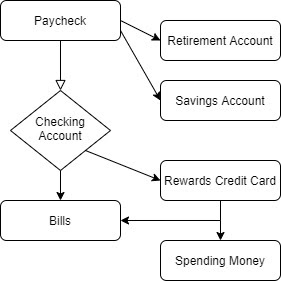.png?width=780&height=520&name=Untitled%20design%20(2).png)
Automate your savings, recurring payments, and investments to streamline your money management and avoid self-sabotage.
Key Points:
- The best money management practice is to pay yourself first by automating your savings and focusing on setting up an emergency fund.
- Pay your bills on autopilot, but be careful which bill payments you automate.
Automate your investments.
Budgeting, staying out of debt and saving/investing are the cornerstones of healthy money management. Keeping these bases covered continuously requires a great deal of focus and energy unless you can somehow automate the process.
Automation helps you stick to your financial goals and avoid the temptation and impulsive behavior that can wreck your budget.
Why Money Management Tips Should Always Include Automation
Automation is one of the best money management strategies because it is:
- Available
- Immune to emotional decisions
- Capable of simplifying your life while keeping you on the right financial track
Automation can help some consumers more than others. Highly disciplined people who enjoy actively working on their finances may not need it as much as the average person. The average person is, however, prone to temptation, making impulse purchases, or forgetting to prioritize savings. Such problems can add up, resulting in spiraling debt and financial trouble.
Resisting temptation is by no means a simple psychological exercise. Deciding against an impulse purchase once or twice, though, will not improve your long-term financial health. You need to develop healthy habits, and there is no easier way to do that than by handing off the task to automation.
It’s easy to forget to set aside money for your emergency fund or to forget to cancel a subscription that you no longer use. But things like that can add up, torpedoing your budget and making it difficult to reach your financial goals. Automation is the answer to these challenges. If you choose wisely about what to automate, a one-time decision can lead to long-lasting financial health..
How Automation Works for Money Management
Automating your finances should be a three-stage process.
- Automate your savings.
- Automate the payment of your recurring bills.
- Automate your investments.
By automating your savings, you pay yourself first by default. Paying yourself first may seem like one of those often-voiced money management tips that have lost substance and meaning.
However, when you automatically direct a portion of your income to a savings account, you will quickly discover just how meaningful it can be.

Here is a list of priorities to consider before setting up savings automation.
- If you do not have an emergency fund, build that up first.
- If you have credit card debt, focus on dealing with that second. Get out of debt as soon as you can.
- If you already have a comfortably-sized emergency fund and your debt is under control, save up for a car, a house, etc.
- If you do well financially, invest some of the money instead of simply saving it.
Once you have established your priorities, you can set up savings automation by:
- Having your employer split your check between a checking and a savings account
- Setting your checking account to automatically transfer a predetermined amount of your paycheck to a savings account as soon as the deposit settles.
Exercise caution when automating your bill payments. It makes sense to automate essential recurring expenses such as student loan payments and rent or mortgage loan payments.
It is recommended that you not automate bills that may fluctuate from month to month such as your mobile phone bill or utility bill. You may also want to think twice before automating subscription payments to your gym, streaming services, and other non-essential services; you may decide to forego these extras at some future point.
- Using your bank’s online bill payment service is a good option. This approach gives you full control of payments. It also allows you to stop payments or to tweak them through a few clicks.
- Autodraft is a solution as well, though hardly an ideal one. By allowing your service provider to withdraw funds from your account, you give up control, complicate the setup process and leave room for problems stemming from returned payments.
- Some people like to use a rewards credit card for the automation of their bill payments to maximize their rewards points. Before choosing this option, be sure to ascertain whether your service provider charges a convenience fee for this service. Also remember that paying your bills with a credit card means that you will pay additional interest if you do not pay your total credit card balance off each month.
Investing represents your most realistic chance to build wealth. Once you identify a sensible investment strategy, it makes sense to automate your contributions to eliminate self-sabotage.
Automated investment approaches include:
- Dollar-cost averaging
- Investing when you get paid
Dollar-cost averaging has become a popular notion with the advent of online investing and exotic investment vehicles such as cryptocurrencies. It is simply the practice of investing a fixed amount in a given asset at regular intervals. As such, it lends itself well to automation.

Investing as you get paid is another form of dollar-cost averaging. As you get money in your account, you automatically funnel a preset portion of it into an investment.
IRAs and non-retirement funds prefer automated investing and facilitate automatic investments.
- Set up an automatic transfer from your checking account to an investment account.
- Set up the specific investment vehicle in which you want to invest. Have a portion of your income directed there automatically.
Getting out of debt is a money management strategy that pays great dividends now and in the future. Want to do it? Get a free savings estimate today.





